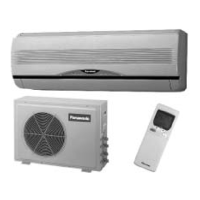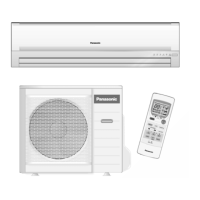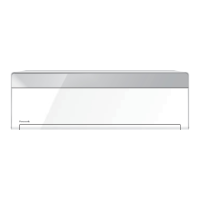66
14.4 Airflow Direction
There are two types of airflow, vertical airflow (directed by horizontal vane) and horizontal airflow (directed by
vertical vanes).
Control of airflow direction can be automatic (angles of direction is determined by operation mode, and heat
exchanger temperature) and manual (angles of direction can be adjusted using remote control).
14.4.1 Vertical Airflow
Operation state Upper blade Lower blade
Heating Operation
Auto
C area 30° 35°
B area
Sensor, windbreak, wind address Refer to the part of area air-conditioning
Normal powerful 60° 58°
A area 10° 15°
Manual
Manual 1 10° 15°
Manual 2 15° 38°
Manual 3 30° 45°
Manual 4 45° 52°
Manual 5 60° 60°
Cooling Operation
Auto
Sensor, windbreak, wind address Refer to the part of area air-conditioning
Powerful
Air-flow initial 25° 30°
Air-flow stability/instability Same as cooling manual 2
Normal
Neuro stability 8° ~ 30° 10° ~ 35°
Neuro instability 8° ~ 35° 10° ~ 40°
Manual
Manual 1 (Ceiling air-flow) 0° 3°
Manual 2 8° 21°
Manual 3 15° 38°
Manual 4 32° 46°
Manual 5 50° 50°
Dry Operation
Auto
Sensor, windbreak, wind address Refer to the part of area air-conditioning
Normal, powerful Ceiling air-flow
Manual
Manual 1 0° 3°
Manual 2 8° 13°
Manual 3 17° 22°
Manual 4 26° 31°
Manual 5 35° 40°
Blower operation
Automatic Same as the normal neuro stability of cooling automation
Manual Same as cooling manual
Inside drying Slight open
Change control Slight open
Stop, filter cleaning, room temperature lookout waiting Cooling position after reset
Louver opening, in check mode Same as cooling manual 5

